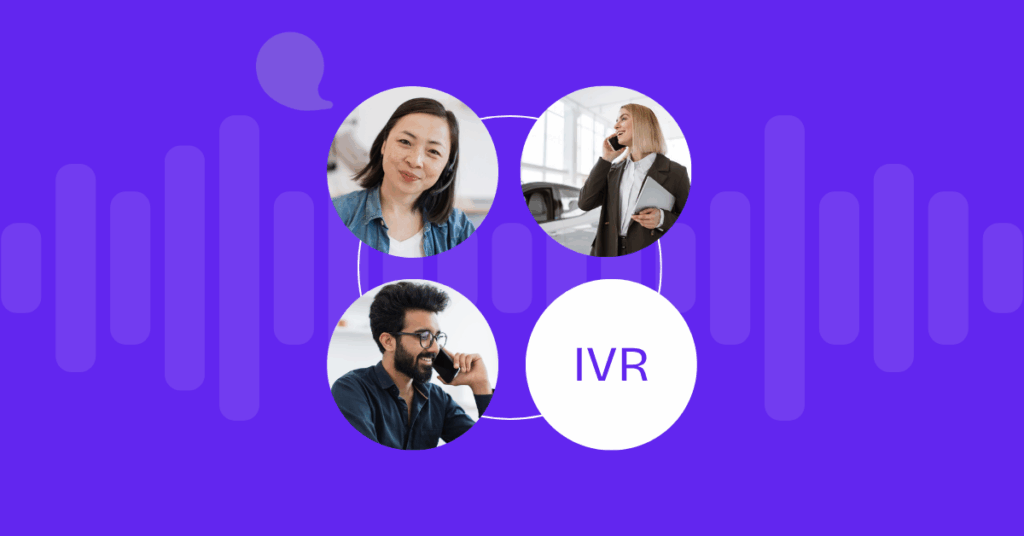Call center ACD: automatic call distribution for the best customer service
- Renier Schrenk

Table of contents
If you think customer service is important and you have a call center, then you probably know how quickly your agents get overwhelmed with calls. Many small businesses start off with a basic phone system or even mobile devices to handle incoming calls. What happens when all 3 agents are talking to customers and a fourth call comes in?
With a basic phone system, you can send customers to voicemail. It’s not ideal but it kind of works. Then you find your voicemail inbox gets full and customers cannot leave messages anymore. Or just maybe your system allows you to put customers on hold until an agent is free to take it. Now you have 10 customers waiting on hold with no end in sight.
If these situations sound familiar, then it’s time to consider an Automatic Call Distributor (ACD) system. It’s a technology that helps your business bridge the gap between customer expectations and reality.
What is ACD?
The ideal standard for customer service is quite simple: if a customer calls you for any reason, they should be able to talk to someone who can help them. Preferably without spending any time on hold or your agents transferring them to other departments. Call center ACD systems – along with others like IVR (Interactive Voice Response) and call queues – help your business get closer to that standard.
Any ACD system basically connects incoming callers to the person or department best qualified to answer them. It identifies incoming calls based on type, phone number, time of day, etc., and organizes them into an orderly queue.
How does ACD work?
Most call center ACD systems work with other call center technologies like CRM and IVR. By integrating with your CRM application, the ACD system can identify the caller and even their account information. It can then direct them to a specific department or person based on that data. For instance, if the caller is identified as a high-value client, the ACD can direct them to experienced or more skilled agents.
The ACD directs calls based on the criteria you set. You can send calls received after business hours to a call center in a different time zone. Or you can distribute incoming calls to different agents based on who is available at the time, when they last took a call, or even based on their skill set. You can also combine several different criteria for even more control.
ACD vs IVR
Many people confuse ACD systems with IVR technology. While both are useful to wrangle your call queue and route calls, they are not the same. The main difference lies in the fact that the IVR directs calls based on input from the caller. ACD systems direct calls based on your criteria and the caller is not even aware of this.
Consider a call coming in after hours. The ACD system automatically directs the call to an agent in another office or even to voicemail. The IVR system, on the other hand, will send a caller to technical support because they asked for help or pressed a number for that department.
In fact, most call centers use both IVR and ACD systems together. The IVR can handle basic queries, thus reducing the number of customers waiting to talk to an agent. The remaining calls are distributed by the ACD to agents based on specific criteria.
ACD Strategies
You can set up call routing based on one or more factors. For instance, some agents will be more experienced than others. Or some agents may have more knowledge of specific products and services. So you can route calls based on things like:
- Skill set
- Experience or knowledge
- Queue length or wait time
- Agent availability
- Time of day
- IVR input
Even within such criteria, you may need another strategy to distribute calls. Suppose you have 5 agents who can provide customer support in Spanish and 10 who provide support in English. When a customer wants Spanish support, how do you decide which agent takes the call? There are specific ACD strategies you can use in such cases:
- Fixed order: Incoming calls are distributed based on a fixed order. If the first agent on the list is busy, it goes to the second agent and so on.
- Circular distribution: Incoming calls go to the next agent who’s in line after the current one. When everyone has taken a call, the cycle restarts.
- Uniform distribution: You can use this method if you want every agent to take roughly equal number of calls. The next call goes to whichever agent has taken the least calls that day or has been idle the longest.
- Simultaneous distribution: With this method, each call rings all agents and anyone can answer the call.
- Time-based distribution: This is useful if your agents do more than simply answer calls all day. It’s ideal for contact centers where support queries can come in through email, chat or other channels along with voice calls. So agents can specify when they are available to take calls during the day. Based on this criteria, calls go to the next available agent
- Skill-based distribution: Here you assign a weighted score to each agent based on some criteria like language, skills, experience/knowledge etc. Then calls from clients go to the agent who’s best for that specific domain or skill set.
- Smart distribution: This method uses a more data driven approach to match callers with agents. For instance, you may want high value clients to go to experienced agents. Or some clients may want to talk to the same agent as they have worked together for a long time. You can set up the ACD system so that these call rules are considered.
Benefits of using ACD
The benefits of using call center ACD systems are immense.
-
Connect callers to the best agent for the job
No customer has ever liked waiting on hold, even if it’s just for a few minutes. Call center ACD allows you to connect to the right person the first time. Whether the customer needs support in a particular language or a more skilled agent, your system will get them the help they need.
-
Improve customer experience
With a good call center ACD, you can improve the customer experience. No one likes having to repeat their name and account information or being transferred multiple times to get the correct person on the line. You can route VIP customers to their preferred agent or your best salesperson.
-
Increase agent productivity
When you have newer agents taking calls, you always run the risk of having to transfer the customer. They might not know the correct information or may need to get help from their more experienced colleagues. ACD systems can help you route simple queries to new agents and more complex calls to experienced ones. This can help improve agent productivity and minimize call length for customers.
-
Prevent long hold queues
Call center ACDs can help you manage call queues effectively. You can set up multiple queues based on language, skill level, experience etc. This allows calls to be answered quicker and resolved more easily. You can also set up callbacks for customers who don’t want to wait on hold. They can leave their number and an agent will call them back when it’s their turn.
-
Route all incoming support queries
Today, call centers handle more than just voice calls. Your agents get queries through email, chat and social media. Call center ACD systems can handle all types of incoming queries, not just voice. This allows you to assign the best agents for each incoming request.
How to evaluate ACD systems
As always there are multiple ACD systems that offer varying features for businesses. Rather than looking for the ‘best’ or most expensive, focus on finding a service that provides the best value for you. Consider the features you require in an ACD system, then find a reputed vendor who offers the best price for those features.
Some features you should look for include:
- Omnichannel support: can the system handle more than regular voice calls?
- Integration: will the ACD system integrate with your current phones, CRM, and other technologies?
- Automatic callbacks: can your callers leave a number for your agents to call them back? After all, most people don’t like to spend any time waiting on hold.
- Routing: does the system support skills-based or smart routing? Is it easy to set up and use?
- VIP callers: will the ACD system support identifying certain numbers as VIP or blacklisted ones? This allows you to block calls from bots and spammers, allowing real customers to talk to a person quicker.
Apart from these major features, you should also consider cost and future growth. Naturally the system you select should fit your budget today but it should also allow you room to grow. In fact, you may not even need a standalone ACD system. Many VoIP service providers offer ACD features for clients. So contact us and start using this invaluable service today!
More from the blog
Want to improve your business communication?
Unlock enterprise-class call center power at affordable prices – no hardware, no delays, no surprises!






